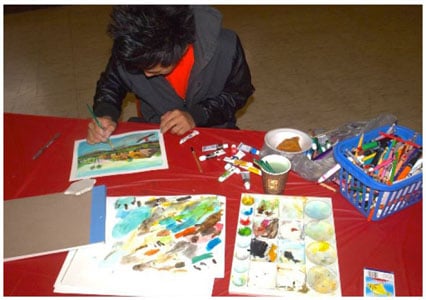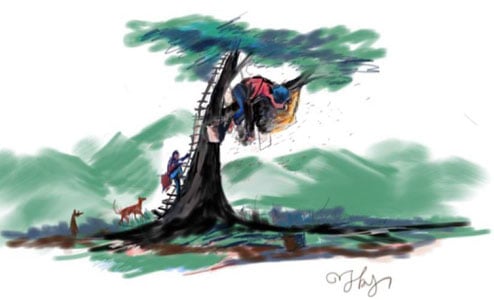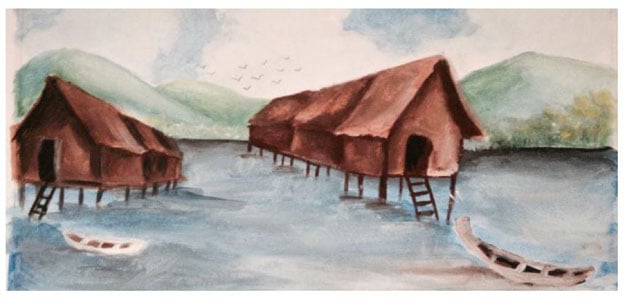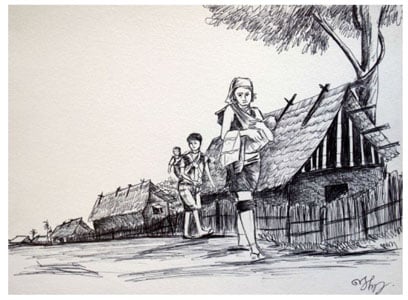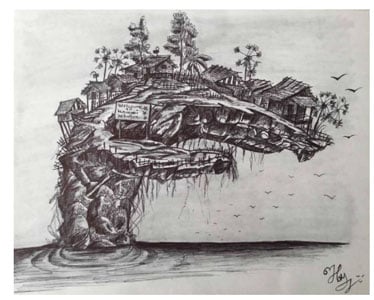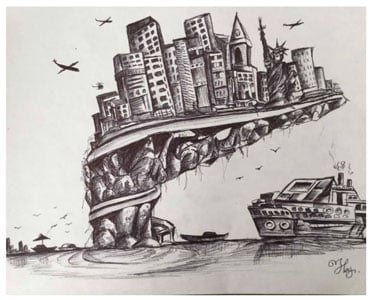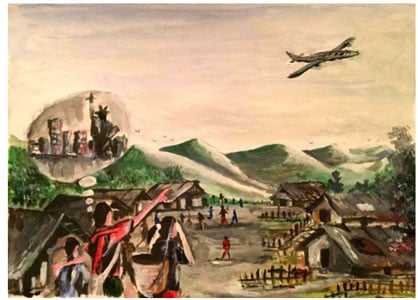When Htoo Kolo Wah was a young boy living in a U.N. refugee camp outside of Burma, he watched his parents struggle to feed their family and wondered how, as an adult, he would ever be able to provide for his own. Hoping for a miracle, he dreamed of a future as an engineer. Now, as a refugee living in Worcester, he’s learned to stand on his own and is in his freshman year at UMass Dartmouth, studying mechanical engineering.
“My family came to the United States to achieve a better life and live independently,” Wah writes in a new storybook, When We Were Home: A collection of memories from Burmese refugee youth. “Here everyone has to stand by themselves; nobody tells you what to do. It’s you! You must pursue your dream. When I was young in Mae Ra Moe camp, I always wanted to be an engineer. Now, here I have a chance to follow this dream, by going to a good college.”
The collection of memories, reflections and folk tales was coordinated by three School of Medicine students who are longstanding volunteers with the Worcester Refugee Assistance Project (WRAP). It includes stories from more than 15 young refugees who have resettled in the Worcester area. WRAP, which was co-founded by Meredith Walsh, MPH, RN (GSN ’13), while she was a master’s student, provides a wide range of assistance to help Burmese refugees attain self-reliance in their new home.
|
“I always go with my father to find honey in the forest. When we go up the mountains, |
“The idea for the storybook arose while we were driving back from Gillette Stadium, where we take the kids once a year to see a New England Revolution game,” said Mark Fusunyan, a third-year medical student and WRAP volunteer. “One of the youth spontaneously shared a story about his father’s past as a soldier battling the Burmese army and how he admired him. At the end of his story, he suggested that as a group, the WRAP youth might have stories worth recording in some form.”
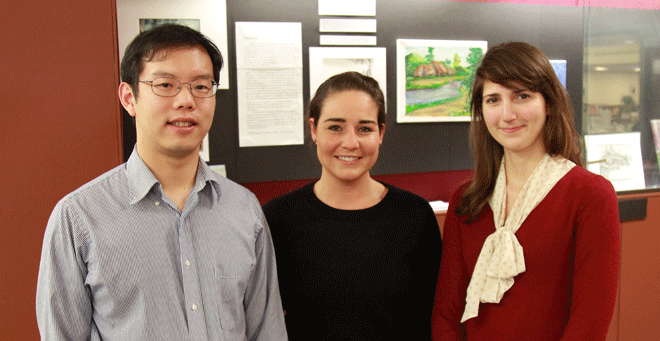 |
|
|
Third-year medical students Mark Fusunyan, Courtney Temple and Alyse Wheelock, pictured in front of an exhibit at the Lamar Soutter Library that showcases original artwork along with story excerpts from When We Were Home. |
In fall 2014, Fusunyan and fellow volunteers Courtney Temple and Alyse Wheelock applied for a grant from the Worcester Arts Council to collect and print a book of the refugees’
